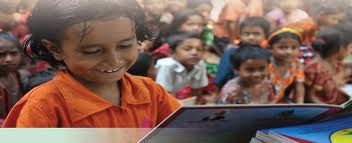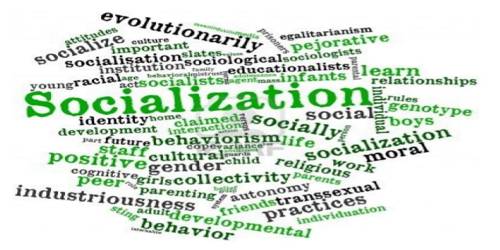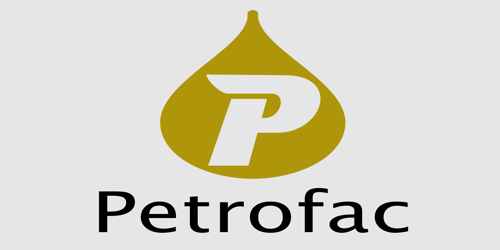Introduction:
Development progress of Bangladesh has the potential to capture at least 15 million jobs and reach the target of 8 percent growth in the medium-term. The outlook is heavily dependent on whether Bangladesh can successfully seize opportunities and manage risks.
Development Progress
Bangladesh has recorded impressive economic and social gains since the 1990s:
- Steady economic growth of 4-5% annually, relatively low inflation, and fairly stable domestic debt, interest, and exchange rates.
- This growth performance, coupled with an impressive decline in the population growth rate from 2.5% in the 1980s to 1.7% in 1990-2004, has led to a doubling of annual per capita GDP growth, from 1.6% in the 1980s to 3.3% in 1990-2004.
- In terms of per capita GDP growth, Bangladesh outperformed both IDA-only countries and low-income countries in this period. This growth record was also accompanied by more stable growth, itself a function of Bangladesh’s improved disaster management capacity.
Bangladesh has taken large strides toward achieving the Millennium Development Goals (MDGs). The country has outperformed most low-income countries on a range of social indicators.
- It increased gross primary enrollment from 72% in 1980 to 98% in 2001 and has already attained the MDG of eliminating gender disparity in primary and secondary enrollment.
- With the sharp decline in infant mortality from 145 to 46 per 1,000 live births between 1970 and 2003, and in child mortality from 239 to 69 per 1,000, Bangladesh is set to achieve the targeted two-thirds reduction from 1990 levels by 2015.
- Food security has improved markedly, even for the very poor. There have also been steady gains in income poverty: the share of the population in poverty declined from 59% in 1990 to 50% in 2000, with rural areas accounting for nearly four-fifths of this decline.
- Bangladesh’s actual values for fertility, infant and child mortality, contraceptive prevalence, and crude birth and death rates are much better than would be predicted for a country at its income level. These gains have occurred despite widely held perceptions of poor governance. Bangladesh scores low on most global governance perception indicators, and investors rank corruption among their most serious concerns.
·
IFC and MIGA Programs
he International Finance Corporation (IFC), with a current portfolio of $132.5 million in nine projects, expects to continue to provide direct support to the private sector, with a special emphasis on infrastructure, energy, and manufacturing sector projects. IFC will also support the development of local capital markets and a competitive banking sector. The South Asia Enterprise Development Facility (SEDF) will continue to provide technical assistance to financial intermediaries, small and medium-size enterprises (SMEs), and professional service firms that support SMEs. The Multilateral Investment Guarantee Agency (MIGA), with an exposure of $112 million in five contracts, plans to support foreign investors in telecommunications, infrastructure, and natural resources and provide technical assistance to the Board of Investment and support to the Export Processing Zones Authority.
Using the sun to light homes in Bangladesh
Electricity is crucial for economic growth. Apart from everyday use such as lighting and watching television, studies have also shown that there is a direct correlation between productive use of electricity and increase in household’s income. Children learn better and are healthier when their village and households have access to electricity.
Bangladesh lags behind many of the other countries in the world in terms of access to electricity with only 35% of the entire population having access to electricity. Bangladesh has an ambitious target to ensure access to electricity for all by 2020. Conventional grid electricity cannot connect people living in isolated areas. Therefore other means of electrification including renewable energy options like solar and wind must also be considered. The World Bank financed Rural Electrification and Renewable Energy Development Project (RERED) is piloting several such renewable schemes. The project’s target of installing 50,000 Solar Home Systems (SHS) has already been achieved 3 years ahead of schedule – a noteworthy success.
Three special ingredients – creative partnerships, clever technical designs and financing – contributed to the sstems to rural areas. The private sector designed and produced low cost solar panels and battery chargers that could be maintained in local conditions. A creative refinancing scheme – IDCOL refinanced 80% of the loans extended by MFIs to households for purchasing solar home system and MFIs expanded their rural electrification lending well beyond what they could do with their own resources alone.
The solar electrification program is already yielding positive impact on the rural economy. Apart from connecting rural Bangladesh with the rest of the world through television, it has created more than one thousand skilled and unskilled jobs. It has extended the working hours for home based work, students can study after dark and women can spend time for income generating activities even after sunset. In village markets, shop keepers use SHS to attract customers in their shops, translating into higher income for them. Households can avoid ‘kupi lamps’ for lighting which reduces the risk of accidents from fire. The beneficiaries of the project have also said that night time lighting has given them greater security.
Due to the benefits of this project and for its successful implementation, the World Bank is providing additional funding to IDCOL, which hopes to install 200,000 SHS in remote ruraluccess of solar home systems: Infrastructure Development Company Ltd. (IDCOL), Rural Electrification Board (REB), the Palli Bidyut Samites (PBSs), micro-finance institutions (MFIs), and private sector battery manufacturers and equipment suppliers, formed a unique 5-way partnership to bring solar home sy Bangladesh.
“GOVERNANCE CONUNDRUM”
How has Bangladesh done so well despite such poor governance?
Explaining this conundrum requires unbundling governance, recognizing both successes and failures. Bangladesh has shown slow but steady gains in public accountability, with successive free elections, an increasingly assertive Supreme Court, a rapidly growing and active civil society, and a relatively free media. The state has encouraged the emergence of a vigorous private sector through sound macroeconomic management and trade liberalization. Financial sector governance is improving, and successive governments have allocated budgetary resources wisely, emphasizing pro-poor expenditures.
Governments have made room for and forged strong partnerships with NGOs, which have contributed to the impressive development gains. On the other side are the governance failures. The increasingly unhealthy competition and lack of trust between the two major political parties sours the political climate and is a major governance weakness. The high cost of elections feeds public corruption. An overly centralized state reduces public accountability in the delivery of services. An inadequate revenue effort and weak public financial management undermine the effectiveness of pro-poor spending policies and foster corruption. A weak civil service and justice sector compromise the delivery of essential services, including law and order.
The Government’s recently completed Poverty Reduction Strategy Paper (PRSP), “Unlocking the Potential,” recognizes that despite past gains, a large unfinished agenda remains:
- Some 63 million people live in deprivation, two-thirds of them in extreme poverty. Inequality may be rising.
- Adult illiteracy remains persistent and is falling only slowly. With malnutrition and maternal mortality levels in South Asia still amongst the highest in the world,
- Bangladesh’s relatively good performance compared with India and Pakistan is little comfort.
- Attaining the MDGs calls for accelerating economic growth to 6-7% a year. This will not be easy. While garment exports have continued to perform well, risks to the sector remain.
- Garment exports, three-quarters of all exports, are vulnerable to competition from low-cost producers now that the Multifibre Arrangement (MFA) has come to an end.
- The availability of cultivable land is declining.
- Accelerating growth will require higher investment levels—to diversify into areas of comparative advantage and to finance infrastructure—and higher productivity. This in turn calls for a substantial improvement in the investment climate, harmed by perceived high levels of corruption and lack of transparency.
Attaining the human development goals will require accountable and responsive social service delivery systems that reach the poor. Raising productivity and reaching the more difficult goals for maternal mortality and malnutrition will require improving the quality of education and health services. And this will require improving institutional accountability and incentive structures, still very weak as a result of a poorly functioning and overly centralized bureaucracy operating within one of the most centralized countries in the world.
These gains in quality will also depend on improvements in the quality of local governance. Improvements in the investment climate and service delivery also require stronger “core” governance. The modest revenue effort needs to be enhanced, and public financial management, including procurement, strengthened to reduce leakages. And greater public access to information will be needed if civil society and the public are to hold government accountable for service delivery. As the PRSP puts it, “a major thrust of the PRS has to be on ensuring good governance.”
The Ank’s new country strategy The World Bank’s strategy, strongly focused on governance, is aligned with the PRSP. The Country Assistance Strategy’s (CAS) two pillars — improving the investment climate and empowering the poor — reflect the focus of the World Bank’s programs across sectors. These programs will address sector governance issues in both pillars, as well as ‘core’ governance, such as public procurement, public financial management and judiciary reform. This mainstreaming of governance implies that all World Bank interventions will be as much about improving governance as they will be about improving sector performance.
The CAS puts governance at center stage. Governance will be the core focus in every sector the World Bank engages in, and sector governance reform will be the target of every World Bank-supported project.
Girls education in Bangladesh: Poorer students get better attention
Educational attainments for girls in Bangladesh were among the lowest in the world up until the early 1990s. In the last decade the situation has been transformed and the country is now a global leader in girl’s education. Behind the change is a Government stipend program launched in 1993 to support female secondary education. The benefits to the country from improved female attainment are many and can already be measured in falling birth rates and a falling number of teenage marriages. Stipend is only one of a range of methods used to increase female schooling, with teacher training, and sanitation also playing a key role. The World Bank has been a keen supporter of the initiative from the start, funding a large share of the program through interest-free credit.
In 1993, the Bank began supporting the Government’s stipend program under the Female Secondary School Assistance Project (FSSAP) in 118 upazilas of the country. Currently, the Bank supports the second FSSAP being implemented in 119 upazilas since 2002. The total project cost is US$144.6 million and the World Bank is contributing a US$ 120.6 million interest-free credit.
FSSAP aims to improve the quality of, and girls’ access to, secondary education in rural areas, and to improve both the Ministry of Education’s management capacity and monitoring and accountability mechanisms.
The project, in its third year, is making satisfactory progress. Currently, around eight hundred thousand girls are receiving stipends. Under this project, head teachers are receiving training on management and academic supervision. In addition, Mobile Training Resource Teams (MTRTs) is providing support on the ground to the teachers. FSSAP graduates are also getting fellowship support to continue their education beyond secondary level. The project also introduced an SSC incentive award to boost SSC pass rates. A Family Attractiveness Program of the project that has been introduced to identify out-of-secondary-school girls from very poor families living in remote areas. A pro-poor self-targeting scheme has been introduced on a pilot basis which also makes poorer boys eligible for receiving stipend. More than 1000 tune-wells and latrines have been set up to provide safe sanitation facilities at schools. Department of Public Health and engineering (DPHE) has conducted four rounds of arsenic testing to ensure the supply of arsenic-safe drinking water in schools.
















